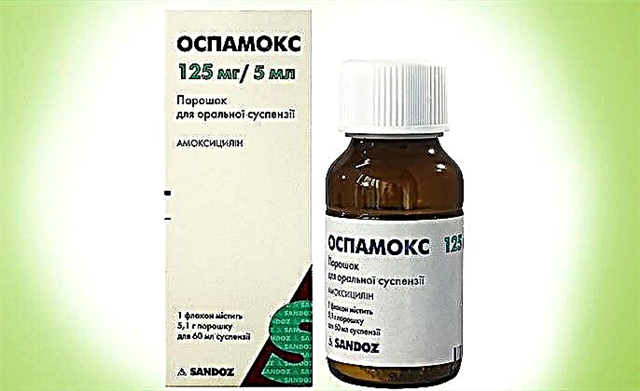Complementary feeding from 3 months is a controversial issue. Some pediatricians believe that at this age the child is ready to become familiar with adult food. Others say that early complementary foods are best administered for medical reasons. Among these doctors is Dr. Komarovsky. There is no need to start feeding a baby at 3 months if he is absolutely healthy and has no deviations in body weight gain and height.

Baby on tummy
Is the baby ready to start complementary foods at 3 months
At 3 months, children have an insufficiently formed digestive system. It is difficult for them to digest adult food. The main food at this age that a baby receives is breast milk or adapted milk formula. If the baby is absolutely healthy, gaining height and weight in accordance with generally accepted norms, then there is no need to feed the baby. For artificial people, the optimal age for complementary foods is 4 months, for infants - 6 months.
In some situations, pediatricians prescribe early complementary foods. There are several reasons for this:
- underweight;
- prematurity;
- the child does not gorge himself on milk;
- Feeding cow's milk instead of formula or breast milk.
In such cases, new products will enrich the baby's diet, give him all the necessary trace elements and vitamins for development.
Physiology of a baby at 3 months
3-month-old children know how to confidently hold their heads, go for a walk, actively learn the world around them, and are able to recognize people from their environment. They are interested in bright toys, pulling their hands to them. The main food product at this age is breast milk or adapted milk formula. In the child's body, an insufficient amount of gastric juice is produced, the intestinal walls are not thickened enough to easily digest adult food.

Child examines his leg
The need, advantages and disadvantages of complementary foods at 3 months
Early complementary foods are prescribed for strictly defined reasons. You should not feed your child with food from a common table without consulting a pediatrician. This can lead to serious consequences. Complementary foods from three months are introduced according to certain indications:
- slow weight gain and growth;
- metabolic problems;
- frequent allergies to formula milk;
- lack of trace elements in breast milk;
- the child does not gorge on liquid food, often requires more.
Important! The unauthorized appointment of complementary foods at 3 months can cause health problems for the child. Before making such a decision, you must consult a specialist.
Feeding babies early has advantages and disadvantages. The benefits include:
- variety of diet;
- establishment of a clear diet;
- reducing the frequency of allergic reactions;
- active weight gain;
- accustoming crumbs to a spoon.
Of the shortcomings, an inadequate reaction of the child's body is noted. A new product can provoke not only an allergic reaction, but also problems with stool. Therefore, at 3 months, mashed potatoes, juices or cereals are allowed to taste with a couple of drops.

Boy on his stomach with a spoon
Features of complementary foods for artificial and infants
Children on gw and willow from birth receive a different type of food. This means that the development of the digestive tract differs slightly between them. Babies are less likely to have problems with stool and allergies, in artificial people, on the contrary.
When introducing complementary foods, it is necessary to take into account the individual characteristics of the baby's development. They begin to feed them strictly according to the doctor's instructions. In other cases, this is not necessary.
The beginning of feeding a baby with breastfeeding is carried out in several stages:
- The child is allowed to taste boiled chilled water. At first, the baby will refuse it. It is necessary to offer it for several days in a row until the baby gets used to it.
- Then the child is offered a few drops of juice. If the concentrate is prepared independently from fresh fruit, then it is diluted in half. The reaction is monitored for the first day, then the portion is doubled.
- After juices, fruit puree, vegetable puree and dairy-free cereals are offered.
- Breastfeeding continues as usual. The baby should not be weaned.
Important! The later there is a change in the child's diet, the less likely he or she will develop allergies and problems with the gastrointestinal tract.
Bottle-fed babies are adapted to food other than breast milk from birth. They digest vegetables and fruits more easily, cereals are more difficult to digest. Therefore, without specific indications, they should not be introduced into the diet. The principle of feeding artificial people is the same as that of infants. Any new food is introduced with caution, carefully observing the child's response.

Boy drinking juice
How to start feeding a 3 month old baby
How can a child be fed at 3 months, young parents ask. Children of this age take liquid food, respectively, complementary foods should begin with a similar consistency of the product. Pediatricians recommend giving fruit juices and purees to try babies and artificial people. If there is a lack of body weight, then the first product should be dairy-free cereals.
Begin feeding with a small dose. The first time the baby is given 3-4 drops of fruit juice. Then the reaction of the body is monitored. If no changes in behavior are observed, then complementary feeding is continued, increasing the dose by 2 times each time. It takes 2 weeks to get used to one product. By the beginning of 4 months of life, the baby tries 2 products.
Table of introduction of the first complementary foods from 3 months
What complementary foods can you start giving your baby at 3 months old? The beginning of a change in the children's diet occurs according to a certain pattern. On the first day, a portion of the juice is a few drops. By the end of 2 weeks, the portion is increased to 30 ml. After each juice feeding, the child is supplemented with breast milk or formula.
Scheme of introducing complementary foods to a child at three months
| Day | Juices, ml | Fruit puree, g. |
|---|---|---|
| 1 | Apple - 1 | |
| 2 | Apple - 2 | |
| 3 | Apple - 4 | |
| 4 | Apple - 8 | |
| 5 | Apple - 15 | |
| 6 | Apple - 30 | |
| 7 | Apple - 30 | |
| 8 | Apple - 30 | |
| 9 | Apple - 30 | |
| 10 | Apple - 30 | Apple - 5 |
| 11 | Apple - 30 | Apple - 10 |
| 12 | Apple - 30 | Apple - 20 |
| 13 | Apple - 30 | Apple - 30 |
| 14 | Apple - 30 | Apple - 30 |
| 15 | Apple - 30 | Apple - 30 |
| 16 | Apple - 30 | Apple - 30 |
| 17 | Pear - 2, apple - 28 | Apple - 30 |
| 18 | Pear - 4, apple - 26 | Apple - 30 |
| 19 | Pear - 8, apple - 22 | Apple - 30 |
| 20 | Pear - 15, apple - 15 | Apple - 30 |
| 21 | Pear - 30 | Apple - 30 |
| 22 | Pear - 30 | Apple - 30 |
| 23 | Apple - 30 | Pear - 5, apple - 25 |
| 24 | Pear - 30 | Pear - 10, apple - 20 |
| 25 | Apple - 30 | Pear - 15, apple - 15 |
| 26 | Pear - 30 | Pear - 30 |
| 27 | Apple - 30 | Pear - 30 |
| 28 | Pear - 30 | Apple - 30 |
| 29 | Apple - 30 | Pear - 30 |
| 30 | Pear - 30 | Apple - 30 |
| 31 | Apple - 30 | Pear - 30 |
These values are optimal for each child. If the first product is dairy-free porridge, then it is introduced in the same small portions as fruit purees. Cereals are prepared in liquid form, at the rate of 5 g of dry product per 100 ml of water. Convenient to use baby dry instant cereals, which are sold in all stores.
Important! It is prohibited to add sugar or salt to baby food. This puts additional stress on the kidneys.

The girl is spoon fed
How to feed a child at 3 months on GV
At the age of three months, children are allowed to try fruit juices, vegetable and fruit purees, dairy-free cereals. The pediatrician will help determine the right product for the child, respecting the individual characteristics of his development. The list of permitted foods at this age includes:
- an Apple;
- pear;
- zucchini;
- prunes (for problems with stool);
- pumpkin;
- cauliflower;
- broccoli;
- rice;
- buckwheat;
- corn grits;
- oat groats.
There is also a list of prohibited foods for young children. They are not digested by the baby's body, causing constipation, allergies and increased gas production. These include:
- potatoes;
- beet;
- cottage cheese;
- meat;
- a fish;
- meat broths;
- eggs;
- dairy;
- tomatoes;
- pepper;
- spice.
What to give a child at 3 months on IV
The same list of products is recommended for artificial people as for infants. The digestive system and the general development of children on different types of feeding are practically the same. Therefore, the reaction and the process of assimilation of nutrients are the same for them. It is recommended to start complementary feeding with fruits and vegetables, juices or cereals. They resort to cereals only when the baby is weakly gaining weight or losing it.
Juices
You can cook such a product yourself or buy it ready-made in a store. Pediatricians recommend giving preference to store-bought clarified juices marked "3-4 +" for the first feeding. When deciding to prepare a drink on your own, fresh fruit is washed under water and peeled. One piece is rubbed on a fine grater. The pulp is placed in cheesecloth and juice is squeezed out. The liquid is diluted with boiled water 2 times. Then they offer the baby.
Fruit or vegetable puree
Homogenized puree is given to children 2 weeks after getting used to juices. Choose products from the list suggested by the pediatrician. Vegetables and fruits are also sold ready-made in baby food departments. If parents decide to cook mashed potatoes on their own, you must adhere to a certain scheme:
- 10 g of vegetable and fruit are washed under water.
- Peel.
- Cook over medium heat for 15 minutes under a closed lid.
- Then the product is kneaded with a fork.
- Add the same amount of broth.
- Beat with a blender until smooth.
Important! For a three month old baby, food should be liquid or semi-liquid. If there are lumps in the food, the child may choke.

Kid eating from a spoon
Dairy-free porridge
To increase the body weight of children, they resort to feeding with dairy-free cereals. Thanks to their calorie content and nutritional value, babies quickly gain weight and catch up with their peers. After such a meal, the baby sleeps well, does not ask for food for a long time and plays actively. It is recommended to choose the following cereals:
- rice;
- buckwheat;
- corn;
- oatmeal.
They do not contain gluten, which slows down the growth and development of the baby. Prepare porridge at the rate of 5 g of dry mass per 100 ml of water. At 3 months, the child is able to digest and consume food only in liquid form.
According to the pediatrician's recommendations, it is preferable to use ready-made instant non-dairy cereals, which are sold in all stores. The manufacturer extracts gluten from cereals, and they are considered safe for children.
Baby's reaction as a signal to stop complementary feeding
At 3 months old, babies are only able to express discomfort and inconvenience by crying. This also applies to complementary foods and reactions to them. If certain signs appear, then it is necessary to stop feeding the baby and urgently show it to a specialist. Signals include:
- The kid refuses to accept new food, spits it out and does not take a spoon.
- Long, long, incessant crying.
- Increased gas production, bloating.
- Constipation or diarrhea, changes in stool character and color.
- Manifestations of a rash or red spots on the skin.
- The presence of vomiting and nausea.

Boy crying
Useful Tips
To make it easier for the child to get acquainted with new food products, it is recommended to adhere to certain tips:
- If the crumb refuses new food, you should not insist, it is better to postpone the bait for a few days, then try again.
- The optimal hours for feeding are considered to be the period from 10.00 to 14.00.
- At 3 months, children eat liquid food, so complementary foods should be as close as possible in consistency to milk.
- Dairy-free cereals are given first of all if the crumb is not gaining weight well.
- Any acquaintance of the baby with new food should be supervised by a specialist.



